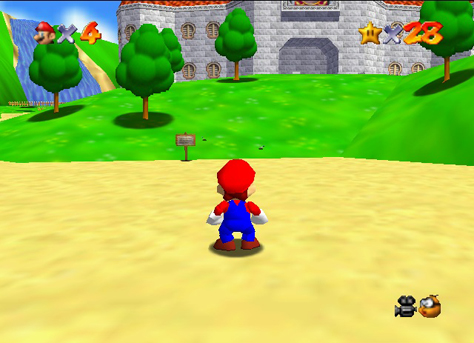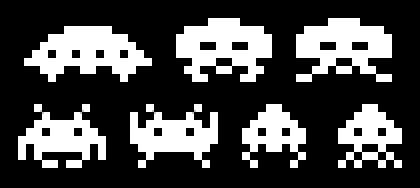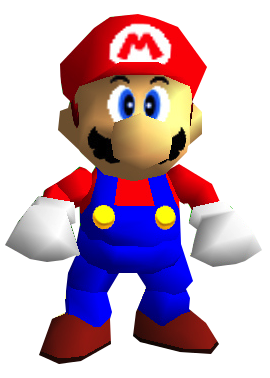1970s - Space Invaders
1980s - Bubble Bobble
Bubble Bobble is an pixel arcade platformer by Taito Corporation, a Japanese video game publisher who is best known for both Bubble Bobble and Space Invaders. The game was released in 1986 on arcade machines, and later ported to various home consoles and other platforms. The game has around 19 spin-offs/sequels to its name, because it became so popular. The game is obviously a key part of the gaming industry, as not everyday you see a game with that amount of spin offs or sequels. One of these was an IOS and Android app released in 2015, so it is still a popular game in todays culture. The characters are more developed than Space Invaders, having outlines around coloured bodies. There is still no visible shading, but there is more than one colour in each character, adding depth to their designs. It is definitely a big leap from the very flat designs of the Space Invader Characters. The two main characters Bub and Bob are both quite obvious designs, as they look like dinosaurs. The enemies seem less obvious, quite alien like. All the designs however have a cute style about them, which has always been a popular factor in Japanese gaming. This is probably why it has been so popular, as the characters and enemies are so likeable and fun. Their colouring is also very bright and makes them very recognisable.
1990s - Super Mario 64

Super Mario 64 is a 3D platform video game published by Nintendo for the Nintendo 64. It was released firstly in Japan in 1996, and then later in other countries. It was one of the early 3D games, and is an open world game so allowed players a large amount of freedom and choice. The game sold over 11 million copies, and a remake for the Nintendo DS was made. The Super Mario franchise was getting bigger and bigger during the 80s/90s, and games like Super Mario 64 and Super Mario Bros. where changing the way game designers worked. Super Mario 64 influenced many 3D games in the future, as did Super Mario Bros. did with platformers. In this game, as with most other Super Mario games, you play as Mario saving Princess Peach.
Mario is an Italian plumber with a big nose, moustache, red cap, blue overalls, white gloves and brown shoes. He is the most likely the most recognisable game character ever created, being in over 200 games. Even in 3D, his clothing and design has not changed. I don't think they would ever change Mario' design due to the fact that he is so popular still. He is a part of everyone's lives; no matter if you like or hate him, you know who he is.
2000s - Kingdom Hearts

Kingdom Hearts is an action role-playing game by Square Enix released in 2002 on the PS2. This game is a collaboration between Square Enix and Disney, using Disney's various worlds and characters from different films, which are changed and worked for the game. The main character of this game is Sora, a young boy searching for his friends with the two Disney characters Donald and Goofy. This game has various spin-offs, sequels and collections, as well as two games coming out in the future. Sora is portrayed as a happy, carefree boy who has friends he has known since childhood. I find that because he is so happy and carefree, he is a more likeable character and you bond very quickly with him. He loves his friends very much and throughout the game is put through some very tough challenges, but he is always very motivated and determined to help others.
His design in the first game is as seen above. He has very large feet with big yellow shoes on, red short overalls, a hoodie with multiple things hanging off it, spikey brown hair and his keyblade. His design has a soft appearance, and his colour scheme is quite loud. I feel like those two design points really reflect on his personality, he's loving and caring but he's loud and, kid-like.
2010s - Journey


Journey is an indie game released in 2012 by Thatgamecompany for the PS3, and recently the PS4. This game is mostly played online, but you cannot talk to those you meet. This is what makes this game such a visual experience, there is no talking or fighting, and to make contact with anyone you make musical chimes. Everyone plays as the same character, a brown/red robed traveller with a scarf, however when you beat the game you can get a white and gold robe, and other embroideries onto the outfit. The scarf lengths can change however when you collect certain items, so other people could be further along than you and have a longer scarf when you meet them. This game has been praised worldwide, and is seen as one of the greatest video games of all time. The traveller is quite a simple design, with stick-like legs and a big cloak meaning there is not much body definition, but the character fits in well with the flowing desert feeling this game puts across.




No comments:
Post a Comment